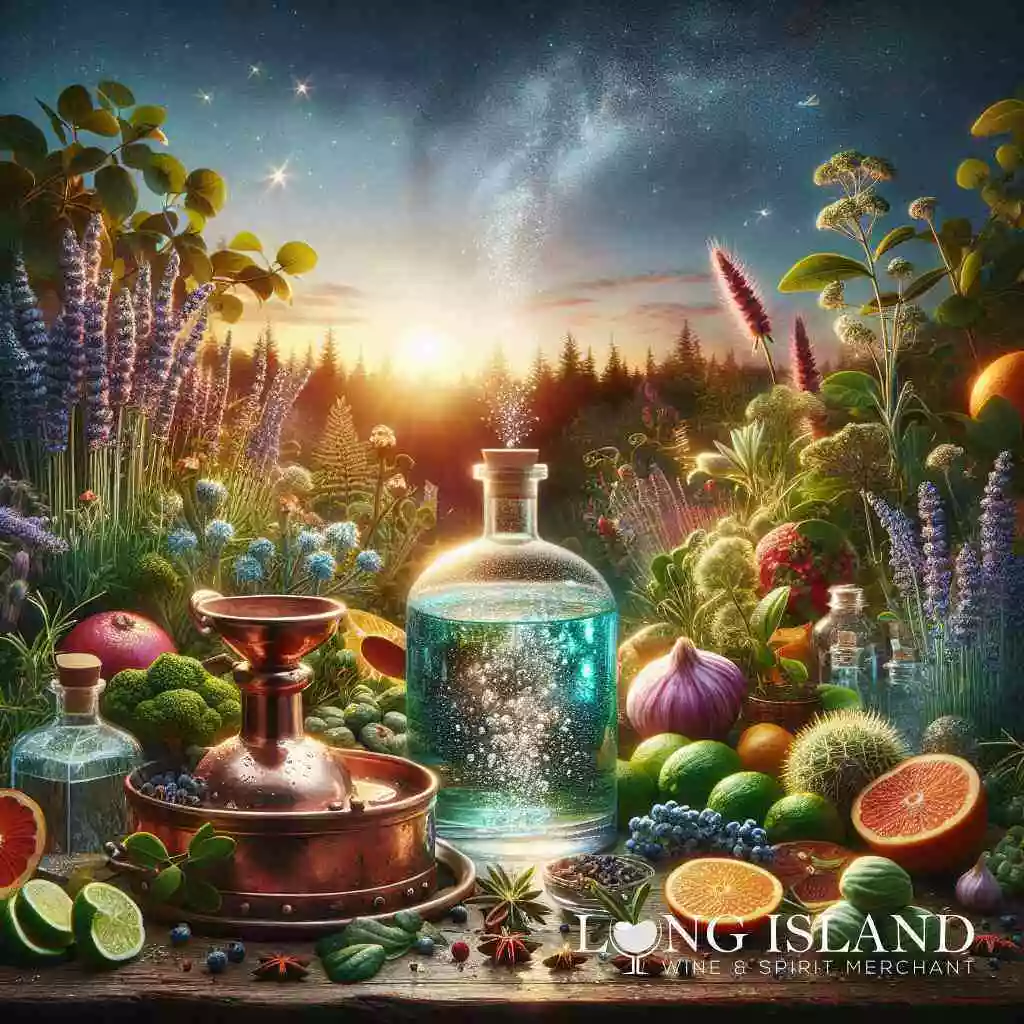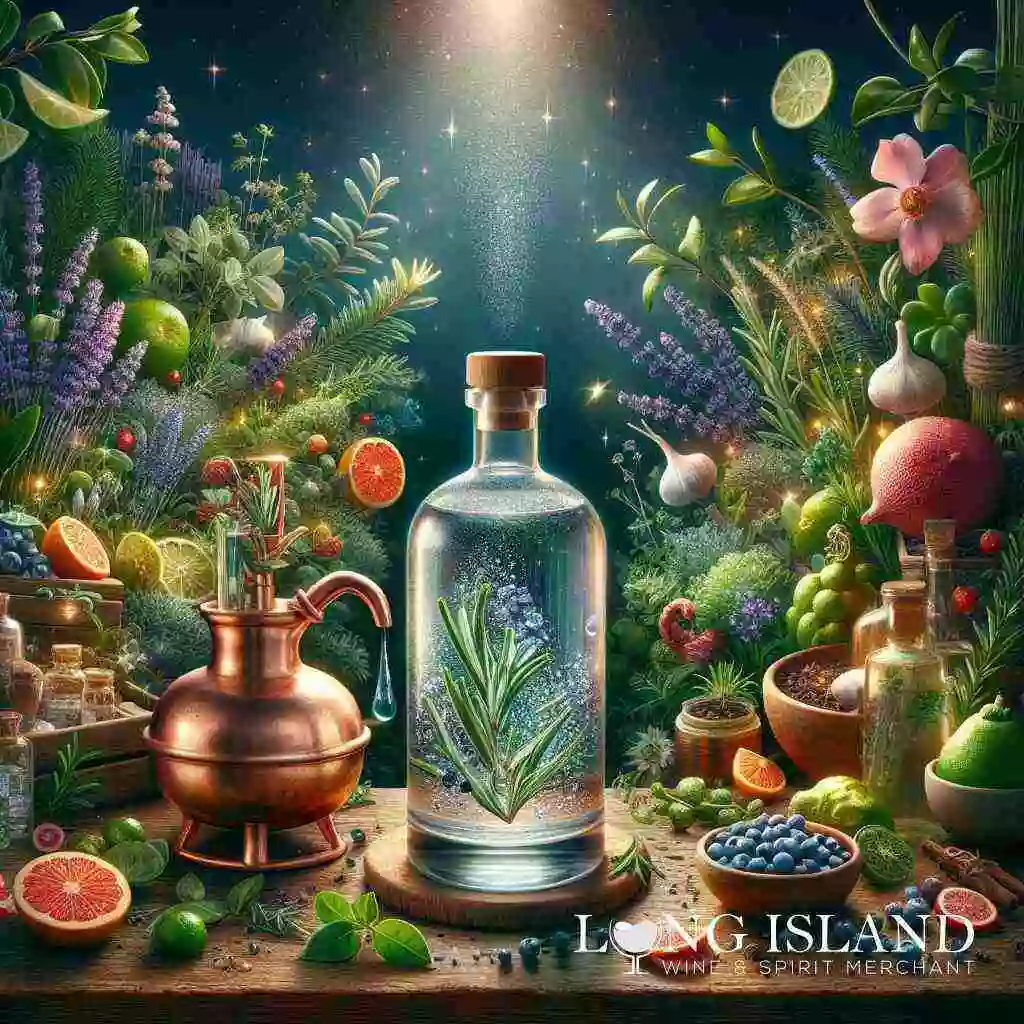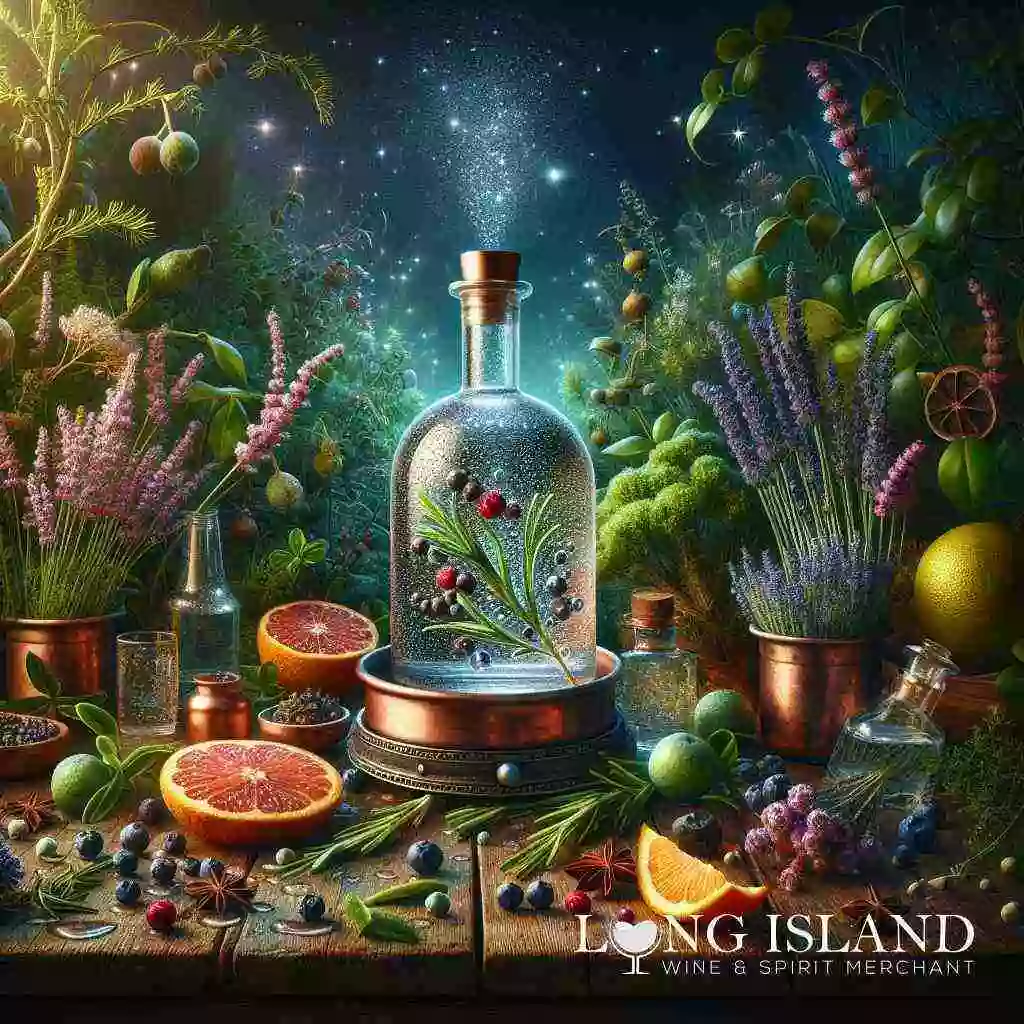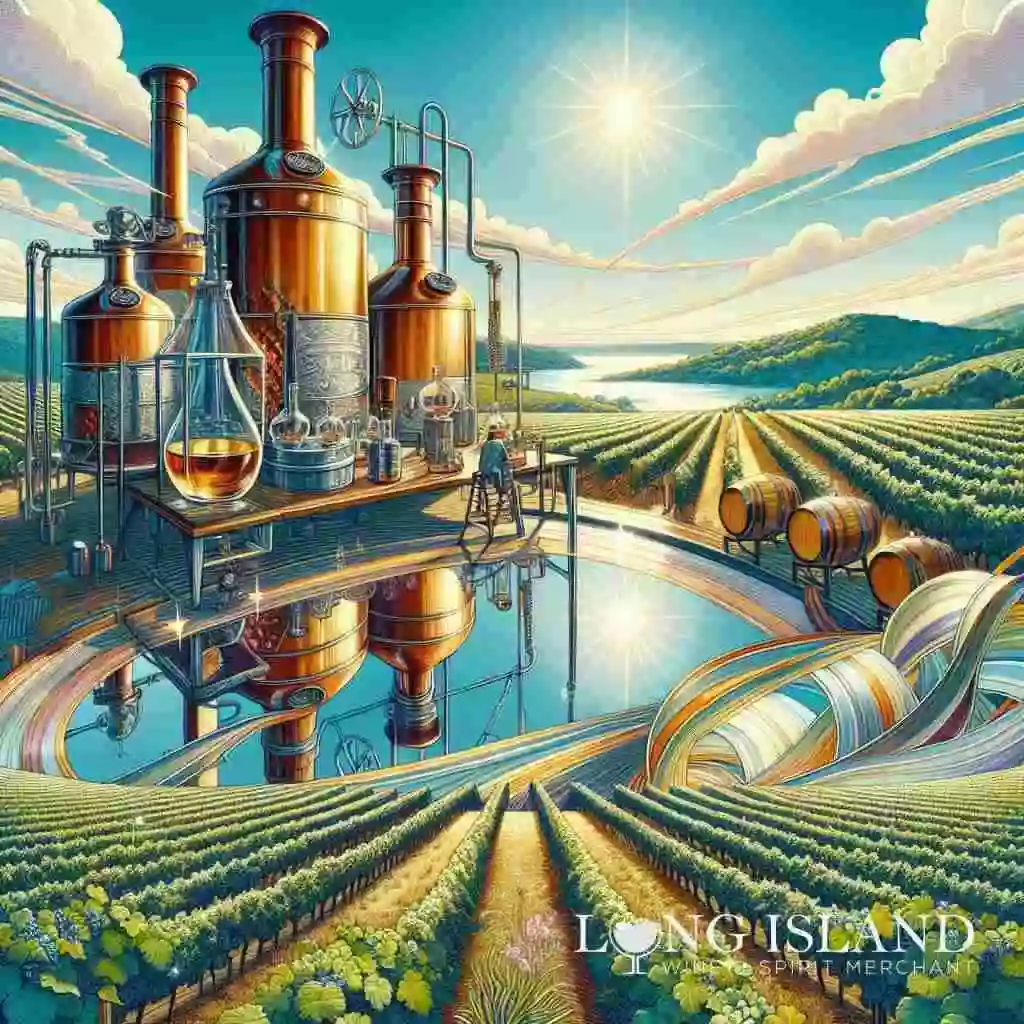
What is the Definition of Craft Gin
June 29, 2024
Introduction to Craft Gin
The Renaissance of Gin
The last few decades have marked a significant resurgence in the popularity of gin, embodying a modern renaissance of this storied spirit. This resurgence is not just about the increasing number of gin enthusiasts but also about the profound evolution in how gin is perceived, crafted, and enjoyed. The movement has been driven by a burgeoning interest in unique, high-quality, and artisanal spirits, showcasing the intricate balance of flavors that can be achieved. As gin lovers seek out more refined and distinctive experiences, the spotlight has turned to the craft gin category that champions creativity, tradition, and the art of distillation.
Defining Craft Gin
Craft gin, at its core, is distinguished by its small-scale production and the artisanal approach of its makers. Unlike mass-produced varieties, craft gin is often characterized by meticulous attention to detail during the distillation process and the thoughtful selection of botanicals used to impart its unique flavor profile. This segment of the gin market treasures the authenticity and stories behind each bottle, celebrating the individuality of different distilleries and their commitment to quality over quantity. The definition of craft gin extends beyond the methods and scales of production, it is also about the passion and innovation that distillers bring to the craft, experimenting with local ingredients, traditional techniques, and new ideas to create spirits that are both distinctive and deeply rooted in a sense of place.
The Importance of Small Batch Production
Small batch production is a hallmark of craft gin, embodying the principles of quality, control, and personal touch that define this category. By producing gin in smaller quantities, distillers can maintain a higher degree of oversight throughout the distillation process, ensuring that each batch meets their exacting standards. This approach allows for greater experimentation with different botanicals and distillation techniques, giving rise to a broad spectrum of flavors and styles within the craft gin market. Each bottle of craft gin tells a story of its creation, from the selection of ingredients to the precise distillation process, offering a unique experience to those who seek it. Small batch production is not just a method, it’s a philosophy that prioritizes the uniqueness and integrity of the spirit over widespread availability, making craft gin a cherished choice for connoisseurs and casual drinkers alike.
By embracing these elements, craft gin has carved out a niche that resonates with a growing audience looking for spirits that offer more than just alcohol-they seek an experience, a taste of the artisan’s vision, and a connection to the larger narrative of gin’s ongoing renaissance. Through craft gin, distillers and drinkers alike are redefining what it means to enjoy this versatile spirit, fostering a deeper appreciation for the art and science of distillation.
Craft Gin Distillation Process
Artisanal Techniques in Gin Production
The journey of craft gin from botanical to bottle is distinguished by artisanal techniques that have been refined over time. At the heart of these methods is a devotion to quality and originality, setting craft gin apart from its mass-produced counterparts. Distillers at locales like Long Island, known for their vibrant liquor culture, adopt small-batch spirits production methods that allow for meticulous oversight and creativity at every step of the distillation process. The essence of artisanal gin production lies in the careful selection of botanicals, precise distillation techniques, and, often, a connection to the local environment, where ingredients reflect the local terroir.
The artisanal gin distillation process combines traditional and innovative approaches to extract pure, complex flavors from botanicals. Copper pot stills are commonly favored for their ability to purify the spirit, enhancing its flavor over multiple distillations. This slow, deliberate process ensures that only the heart of the distillate purest part- is captured, while heads and tails, which are less refined fractions, are discarded. Through this labor of love, distillers craft a gin that is rich in nuances and speaks to the landscape from which it hails.
The Role of Juniper and Botanicals
Juniper is the soul of gin, and its presence is what fundamentally distinguishes gin from other spirits. Craft gin, however, goes beyond the traditional juniper profile, embracing a wide array of unique botanicals that imbue each batch with distinct characteristics. Botanicals are the herbs, spices, fruits, and flowers that are selected to complement the juniper’s piney flavor, and their choice is where the artistry of gin production truly shines. Distillers engage in an elaborate process of unique gin botanicals selection, carefully choosing and balancing ingredients to create a harmonious and complex flavor profile.
The infusion of botanicals can be done in several ways, with each method impacting the final essence of the gin. Some distillers prefer to steep the botanicals directly in the spirit before distillation, allowing the alcohol to extract their flavors. Others introduce botanicals during distillation, either in the pot still where their essences are vaporized along with the alcohol, or in a basket where the alcohol vapors pass through, gently picking up the botanicals’ delicate notes. This intricate dance of flavors and aromas is what makes craft gin a canvas for creativity and innovation.
Gin Flavoring Techniques
Exploring the variety of gin flavoring techniques offers insight into the remarkable diversity found within the world of craft gin. A key aspect of crafting a distinctive gin is the masterful use of flavoring techniques that range from the maceration of botanicals to the precise control of distillation and blending. Maceration involves soaking the botanicals in the spirit, a process that extracts their oils and flavors before distillation. Alternatively, vapor infusion involves passing hot alcohol vapors through fresh botanicals, capturing their essential oils without direct contact with the liquid.
The art of blending is another crucial step in flavoring craft gin. Distillers may blend different distillates, each with its unique botanical profile, to achieve a complex, balanced final product. Some artisanal distillers experiment with resting gin in barrels, a practice that introduces additional layers of flavor, such as vanillin or woody notes, further enriching the gin’s complexity. These flavoring techniques, whether applied individually or in combination, are what enable distillers to craft a spectrum of gin styles, from juniper-forward varieties to those rich in botanical diversity.[^1]
[^1]: For more insights into the craft of distillation and the unique world of spirits, including gin, visit Long Island Alcohol Store’s website.
By embracing these artisanal techniques, the role of juniper and botanicals, and masterful gin flavoring approaches, craft gin distillers can achieve an unmatched level of depth and variety in their spirits. This not only caters to the palates of gin aficionados but also contributes to the rich tapestry of the spirit’s global culture.
The Art of Craft Gin
Botanical Gin Profiles
The exploration of botanical gin profiles marks a fascinating journey into the heart of what makes craft gin so special. Distillers at the forefront of the craft movement put a particular emphasis on sourcing unique, high-quality botanicals that set their gin apart. The premium gin botanical profiles that many aficionados rave about are not merely about including exotic or rare botanicals, it’s about how these elements interact to create a harmonious and complex flavor profile. For instance, a gin might feature the bright citrus notes of bergamot, the spicy warmth of cardamom, or the delicate floral touch of lavender, each contributing to a gin’s signature character.
Botanical selection is as much a science as it is an art. Distillers often experiment with local flora, incorporating botanicals indigenous to their region, which adds depth and a sense of place to the spirit. This locavore approach to gin-making not only results in a gin with distinctive profiles but also highlights the importance of terroir in spirits production as it does in winemaking. Engaging with local ecosystems in this way allows craft gin producers to offer a drink that’s not just enjoyable but also tells a story of its origin.
Gin Blending Methods
Gin blending methods play a crucial role in achieving the perfect balance of flavors within craft gin. After distillation, gin makers often embark on the delicate process of blending various distillates to create a final product that is greater than the sum of its parts. This requires a deep understanding of how different flavors complement and interact with each other. Some craft distillers may blend distillates that have been infused with individual botanicals separately, allowing for precise control over the flavor profile of the gin.
The philosophy behind these blending methods is rooted in the pursuit of crafting a signature spirit that reflects the distiller’s vision. Through blending, subtle nuances can be emphasized, and harshness smoothed out, ensuring a well-rounded and complex gin. Advanced techniques, such as solera blending, are sometimes employed to achieve consistency across batches or to introduce nuanced flavors from aged distillates. The meticulous nature of these methods underscores the craftsmanship intrinsic to the production of craft gin, distinguishing these spirits from their mass-produced counterparts.
Juniper-Forward Gin versus Botanical-Rich Variants
In the world of craft gin, a prominent discussion revolves around juniper-forward gin versus botanical-rich variants. Juniper berries are the backbone of gin, imparting the classic piney flavor that defines the spirit. However, the craft gin movement has broadened the palate of available tastes by placing a significant emphasis on botanical diversity. Juniper-forward gins are often appreciated by purists who adore the crisp, clean, and somewhat spicy character of juniper. These gins, such as those featured in the juniper-forward gin varieties, pay homage to gin’s historical roots while showcasing the distiller’s skill in achieving a bold juniper profile that is neither overpowering nor one-dimensional.
Conversely, botanical-rich variants invite a broader exploration of flavors, often incorporating an elaborate mix of herbs, spices, flowers, and fruits to create an intricate and layered tasting experience. These gins reflect the creative aspirations of craft distillers, who use their gin as a canvas to express innovative flavor combinations and sensory experiences. Whether one prefers the robust purity of juniper-forward gin or the complex symphony of a botanical-rich variant, the craft gin movement caters to all palates, demonstrating the expansive possibilities within the realm of gin.
Craft Gin versus Commercial Gin
Understanding the Difference
The distinction between craft gin and commercial gin lies in their production methodologies, scale, and the personal touch infusing every bottle. Craft gin, produced by small-batch spirits production methods, emphasizes quality, flavor depth, and the uniqueness of each distillation. Distillers of craft gin meticulously select their botanicals and often utilize locally sourced ingredients, offering gin enthusiasts a taste of the local terroir. Each batch is carefully monitored, with distillers making adjustments as needed, ensuring the final product meets their exacting standards.
In contrast, commercial gin production is characterized by its large-scale operations. These gins, while consistent and widely available, lack the nuanced flavors of their craft counterparts. The use of standardized recipes and automated processes in commercial gin production often results in a product that, while reliable, offers little in terms of innovation or complexity. The focus here leans more towards volume and market reach than on the artisanal quality or uniqueness.
Why Choose Craft Gin
Opting for craft gin over commercial varieties is akin to choosing a boutique wine over a mass-produced one. It’s about valuing the artisanal process, the story behind each distillation, and the passion embedded in every bottle. Craft gin presents a richer palette of flavors, owing to the diverse botanicals and unique gin mixology for craft cocktails. These spirits often reflect the innovation and creativity of their makers, offering gin lovers a more personalized and immersive drinking experience.
Moreover, supporting craft gin distilleries often means supporting small businesses and local agriculture. Many craft gin producers prioritize sustainability and community involvement, further enriching the appeal of their products. By choosing craft gin, aficionados not only enjoy a superior taste experience but also contribute to the preservation of traditional distillation techniques and the promotion of biodiversity through the use of unique, locally sourced botanicals.
Craftsmanship and Quality
The essence of craft gin lies in its craftsmanship and quality. Unlike their commercial counterparts, craft gins undergo a meticulous hands-on process from start to finish. Each stage, from botanical selection to distillation and bottling, reflects a commitment to excellence. This artisanal approach ensures a high-quality, complex spirit that’s rich in character and distinctly unique.
The craft distillery tours in Long Island offer gin enthusiasts a firsthand look at this craftsmanship, revealing the passion, skill, and dedication behind each bottle. These experiences underscore the importance of quality over quantity, showcasing the artistry and technical expertise that define the craft gin category. Unlike mass-produced gins, where character and distinctiveness are often compromised for consistency and volume, craft gins stand out for their innovative flavors and superior quality, making each sip a testament to the art and science of distillation.
Enjoying Craft Gin
Gin Tasting Notes
Exploring the nuanced world of gin through tasting notes is akin to deciphering the language of flavors unique to each bottle. Craft gin, especially, offers a rich tapestry of aromas and tastes that vary greatly depending on the botanicals used and the distillation process employed. When savoring a sip of craft gin, the initial notes that hit the palate can range from bold juniper sharpness to subtle hints of citrus, floral, or herbal qualities. The mid-palate might introduce more complexity with warmth from spices like coriander, pepper, or even the delicately sweet whispers of licorice and almond. Finally, the finish is where the gin’s true character shines, often leaving a lingering taste that might be earthy or woody, reflective of its aging process, if any.
For those new to gin tasting, it’s beneficial to start with a local gin distiller exploration to understand how local botanicals and distilling methods influence the spirit’s final taste. Notably, Long Island, New York, with its rich agrarian roots, provides an excellent backdrop for such an exploration. Paying attention to these notes not only enhances one’s appreciation of gin but also refines the palate to distinguish between the myriad styles of craft gin available on the market.
Craft Gin Cocktail Recipes
The versatility of craft gin makes it a beloved spirit for mixologists and home bartenders alike. Crafting cocktails with gin as the foundation opens up a world where the spirit’s botanical notes can be complemented or contrasted with a variety of mixers, from the simple tonic water of a classic G&T to the more complex and nuanced ingredients of modern concoctions. One popular recipe that highlights the botanical richness of craft gin is the Herbaceous Gin Martini. This cocktail combines craft gin with dry vermouth, and a dash of orange bitters, and is garnished with a fresh rosemary sprig to enhance the gin’s herbal notes.
For those looking to experiment with bolder flavors, the Spiced Ginger Gin Fizz uses fresh ginger, lime juice, simple syrup, and soda water to create a refreshing cocktail with a fiery kick that perfectly counters the gin’s complexity. These and other recipes showcase how well gin plays with a range of flavors, from sweet and sour to bitter and spicy, making it an indispensable spirit for creative mixology. Interested enthusiasts can order craft gin online to start their mixological adventures with high-quality, artisanal gin at their fingertips.
Pairing Gin with Food
Gin’s botanical complexity also makes it an excellent companion to a wide range of foods. The key to successful gin and food pairing lies in balancing the gin’s flavor profile with the dish to either complement or contrast the flavors. For instance, a juniper-forward craft gin pairs wonderfully with gamey meats and strong cheeses, its piney notes cutting through the richness of these foods. Conversely, a citrus-heavy gin might be better suited to lighter dishes, such as seafood or salads, where its bright acidity can highlight the dish’s freshness.
One should also consider the gin’s preparation: a gin in a Negroni, with its bitter and sweet profile, complements the umami flavors of grilled meats and aged cheeses, while a gin and tonic, bright and effervescent, pairs delightfully with spicy dishes, as the carbonation and citrus notes help cleanse the palate. Exploring these pairings not only enhances the dining experience but also offers a delightful way to appreciate the versatility and depth of craft gin.
Conclusion: Elevating Your Gin Experience
Exploring Local Gin Distillers
In the burgeoning world of craft spirits, exploring local gin distillers offers an intimate glimpse into the artistry and passion that defines this unique sector. Long Island, New York, with its rich history and vibrant community, serves as an exemplary locale where the craft gin scene thrives. These local distilleries, often family-run enterprises, are not just producing gin, they are narrating the story of their region through every bottle. A visit or tour of these distilleries provides enthusiasts with the opportunity to observe the gin-making process firsthand-from the meticulous selection of botanicals to the final distillation. Engaging directly with distillers unveils the dedication behind crafting a product that encapsulates the essence of its origin, offering a taste that is as distinctive as the landscape it hails from.
The Future of Craft Gin
The future of craft gin appears both bright and boundless. As consumer interest veers towards more authentic and artisanal experiences, the craft gin market is poised to expand further, embracing innovative distillation techniques, exploring unconventional botanicals, and even delving into sustainability and eco-conscious practices. This evolution is driven by a new generation of gin makers and consumers alike, who value the story, craftsmanship, and experience that come with each bottle of craft gin. Moreover, the rise of digital marketing for craft spirits brands offers untapped potential for small distilleries to reach a global audience, sharing their unique spirits and stories beyond local borders. As the tapestry of craft gin becomes ever more diverse, it promises to enrich the gin experience, making it more personalized, interconnected, and environmentally conscious.
How to Start Your Craft Gin Journey
Embarking on a craft gin journey is an adventure of flavors, aromas, and histories waiting to be discovered. For those looking to dive into the world of craft gin, the first step could be as simple as visiting a local distillery or selecting a craft gin known for its artisanal qualities. Tasting sessions or gin workshops offer invaluable insights into the nuances of gin, from its botanical ingredients to the various distillation processes. Additionally, engaging with online communities and platforms dedicated to craft spirits can widen one’s understanding and appreciation of gin. Experimenting with gin cocktail recipes at home using high-quality craft gins is another excellent way to familiarize oneself with the spirit’s versatility. Ultimately, the journey of craft gin is a personal exploration, guided by curiosity and a desire to experience the timeless elegance of gin in innovative and meaningful ways.
In conclusion, the world of craft gin offers a unique intersection of tradition, innovation, and artisanal excellence. Whether it’s exploring the rich tapestry of local gin distilleries, witnessing the evolving landscape of gin production, or embarking on a personal journey of taste and discovery, craft gin embodies a spirit of exploration and quality that resonates with enthusiasts worldwide. As we look towards the future, it’s clear that craft gin will continue to captivate and delight, inviting more individuals to savor its complexities and contribute to the ever-expanding universe of artisanal spirits.
Frequently Asked Questions
Question: What is the Definition of Craft Gin as described in your blog ‘What is the Definition of Craft Gin’?
Answer: The definition of craft gin, as highlighted in our blog ‘What is the Definition of Craft Gin’, revolves around its artisanal production, emphasizing small batch processes, the use of unique and locally sourced botanicals, and the personal touch and creativity of the distillers. Unlike mass-produced versions, craft gin from Long Island Alcohol Store showcases a meticulous approach to the selection of botanicals and an artisanal distillation process, ensuring each bottle offers a unique flavor profile and a high-quality spirit experience for enthusiasts and connoisseurs alike.
Question: How do the gin production methods at Long Island Alcohol Store ensure a premium quality craft gin experience?
Answer: At Long Island Alcohol Store, our gin production methods are meticulously designed to ensure a premium quality craft gin experience. By adopting small-batch gin distillation processes, we maintain greater control over the quality and flavor of our spirits. Our artisanal approach includes the careful selection of unique gin botanicals, many of which are locally sourced, embracing the essence of Long Island’s rich terroir. Additionally, our artisans employ a range of gin flavoring techniques, from traditional infusions to innovative extraction methods, to develop complex, nuanced flavors that stand out in the craft spirits market. This commitment to quality and craftsmanship is what makes our craft gin not just a drink, but an experience.
Question: Can Long Island Alcohol Store provide custom alcohol cases of craft gin for special occasions?
Answer: Absolutely! Long Island Alcohol Store is delighted to offer custom alcohol cases of craft gin for special occasions. Whether you’re celebrating a wedding, an anniversary, or a milestone birthday, our selection of handcrafted gin, distilled in small batches by skilled artisans, is perfect for creating memorable moments. With our service, you can select a variety of artisan gin brands and premium gin profiles to suit your taste preferences or the theme of your event. Our team is here to assist in curating a selection that not only impresses but also introduces your guests to the distinct and diverse world of craft gin.
Question: What sets Long Island Alcohol Store’s craft gin apart from commercial gin available in the market?
Answer: What truly sets Long Island Alcohol Store’s craft gin apart from commercial gin is our unwavering focus on quality, locality, and artisanal craftsmanship. Our craft gins are distinguished by their small batch production, ensuring that each bottle receives the full attention of our distillers. This approach allows us to experiment with unique gin botanicals and innovative distillation techniques, resulting in a gin that is rich in flavor and character. Moreover, our commitment to sourcing local ingredients whenever possible offers a taste of Long Island in every sip, marrying the concepts of terroir and craft spirits in a way that mass-produced gins simply cannot replicate. By choosing our craft gin, you’re not just enjoying a high-quality spirit, you’re also supporting local distillers and the craft gin movement. By choosing our craft gin, you’re not just enjoying a high-quality spirit, you’re also supporting local distillers and the craft gin movement.
Question: How can I start my craft gin journey with Long Island Alcohol Store?
Answer: Starting your craft gin journey with Long Island Alcohol Store is an exciting adventure awaiting you. The best way to begin is by exploring our wide selection of artisanal gin and handcrafted gin options available for delivery. We recommend taking our wine taste quiz, which, while focused on wine, provides us with insights into your flavor preferences, allowing us to suggest craft gins that will most likely appeal to your palate. Furthermore, visiting our store for a personal consultation or participating in one of our gin distillery tours can offer a deeper understanding of the craft distillation process and gin crafting techniques. Engaging with our knowledgeable staff can also guide gin mixology, helping you discover how to best enjoy craft gin in cocktails or as a standalone experience.




